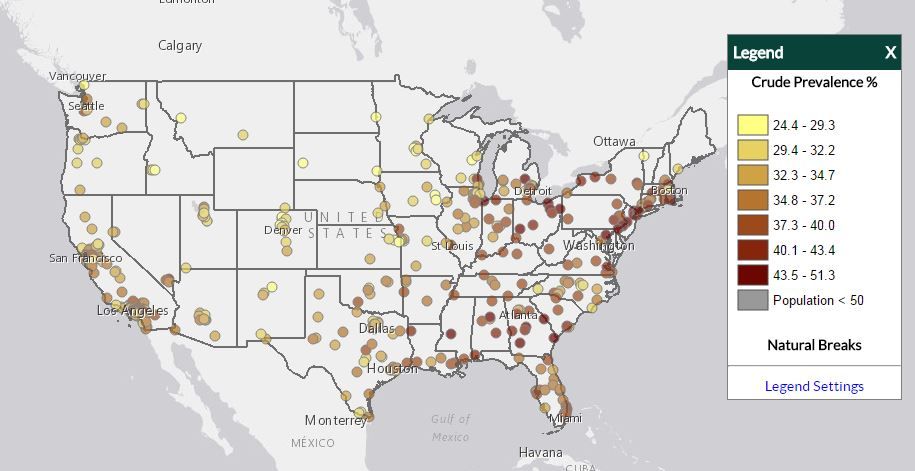How Healthy Is Your City? Check with Interactive Map

How sleepy or boozy is your city? You can find out with a new interactive health map, in which people can pick and choose views of all sorts of health data about cities and neighborhoods across the U.S.
The map is part of the "500 Cities Project," an effort that provides information on 27 different conditions, behaviors and preventive health measures for the 500 biggest cities in the United States. For instance, the website includes data on binge-drinking rates, physical activity levels, sleep habits and smoking rates, as well as the prevalence of asthma, high blood pressure, cancer and diabetes. Until now, access to this type of data for cities and neighborhoods has been more limited.
The project is a collaboration among the Centers for Disease Control and Prevention (CDC), the CDC Foundation and the Robert Wood Johnson Foundation, a philanthropic organization that aims to improve the health of people in the U.S. [9 Healthy Habits You Can Do in 1 Minute (Or Less)]
The website is primarily intended for public health professionals, policy makers and researchers, who could use this data to monitor their cities' health, identify health problems and target health interventions to specific areas, the CDC said. For example, if smoking rates were higher in certain neighborhoods, officials could target anti-smoking efforts to those neighborhoods, the agency said.
"The 500 Cities Project reflects an innovation in health data for more than 100 million people — a third of the U.S. population," who live in these cities, said Donald F. Schwarz, vice president for program at the Robert Wood Johnson Foundation. "For the first time, anyone who cares about the health of those living in our cities can access data down to the city and neighborhood levels for both the conditions and behaviors that have a substantial impact on population health," Schwarz said in a statement.
Using the website, you can see that the U.S. city with the highest binge drinking rate is Appleton, Wisconsin, where about 25.5 percent of people report binge drinking, defined as having at least four to five drinks on a single occasion in the past month. The U.S. city with the lowest binge drinking rate is Orem, Utah, were about 9 percent of people report binge drinking in the past month.
You can also see that the U.S. city with the highest rate of "insufficient sleep," defined as getting less than 7 hours of sleep a night, is Gary, Indiana, where about 51 percent of people report getting that amount of sleep. The city with the lowest rate is Fort Collins, Colorado, where only 24 percent of the population report insufficient sleep.
Sign up for the Live Science daily newsletter now
Get the world’s most fascinating discoveries delivered straight to your inbox.
The website pulls its data from the CDC's Behavioral Risk Factor Surveillance System — a health survey that collects data from residents in all 50 states — as well as information from the U.S. Census. The project researchers use statistical techniques to estimate the prevalence of the conditions, behaviors and preventive health measures at the city and neighbored levels.
Original article on Live Science.

Rachael is a Live Science contributor, and was a former channel editor and senior writer for Live Science between 2010 and 2022. She has a master's degree in journalism from New York University's Science, Health and Environmental Reporting Program. She also holds a B.S. in molecular biology and an M.S. in biology from the University of California, San Diego. Her work has appeared in Scienceline, The Washington Post and Scientific American.













